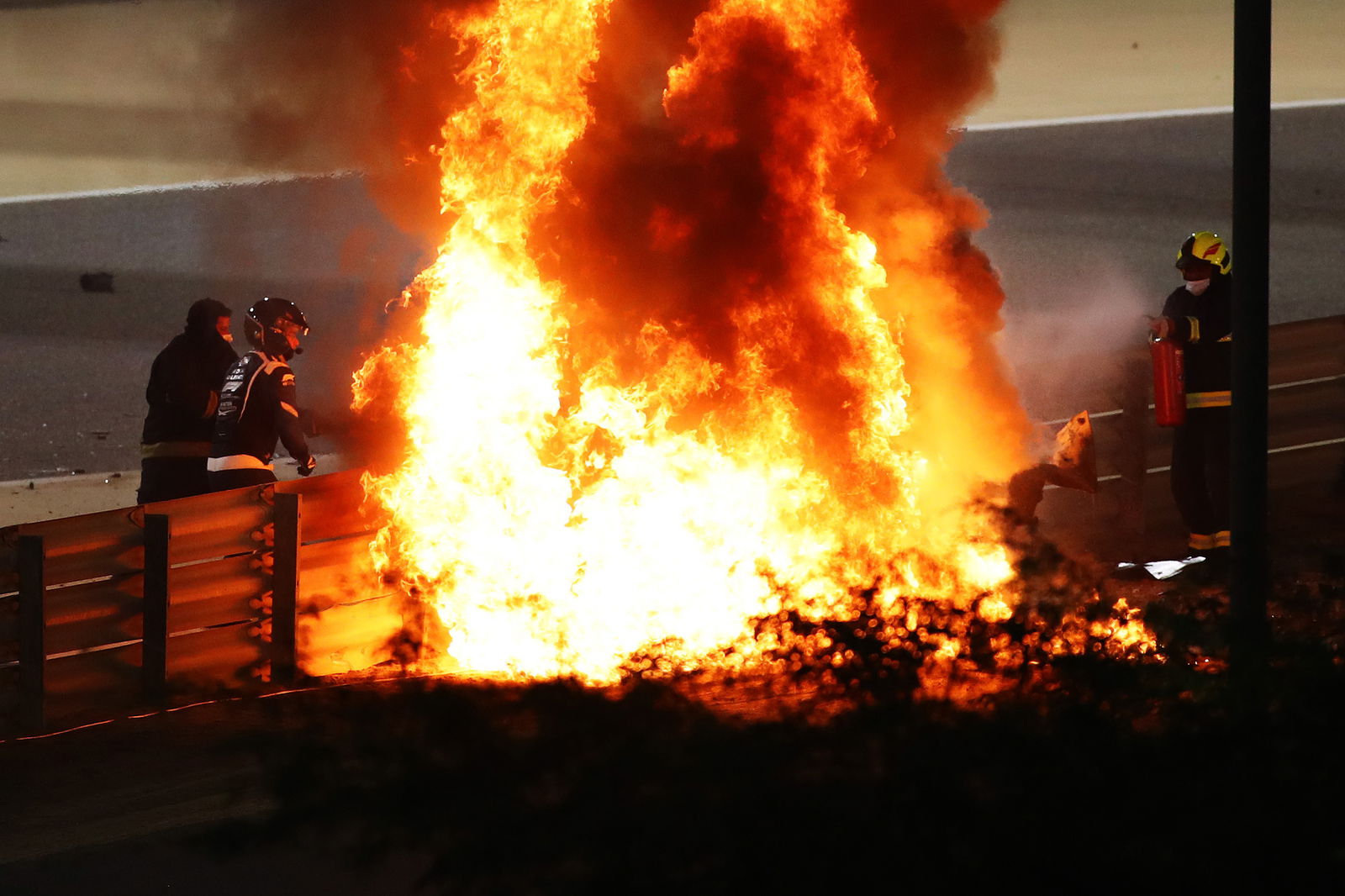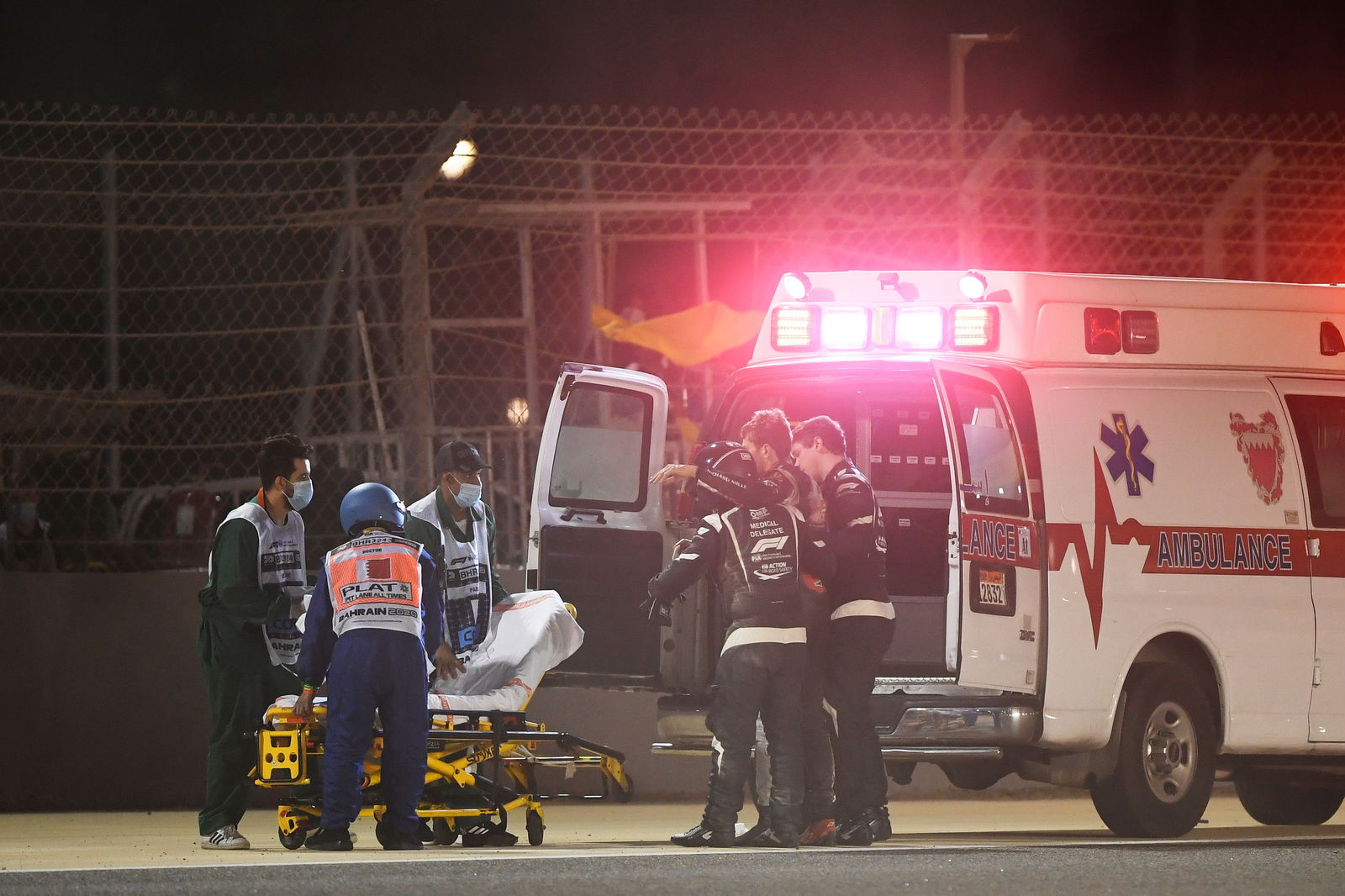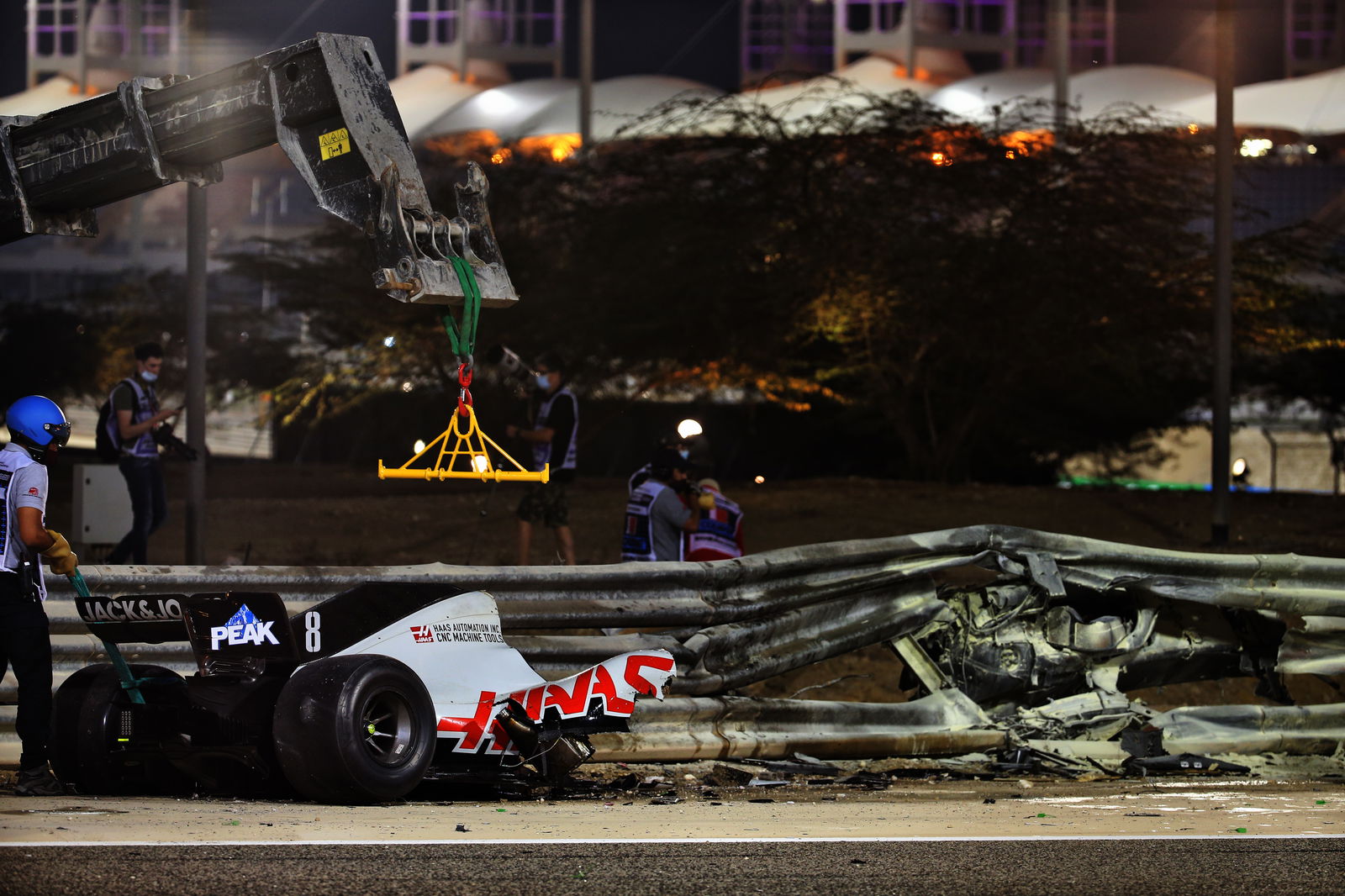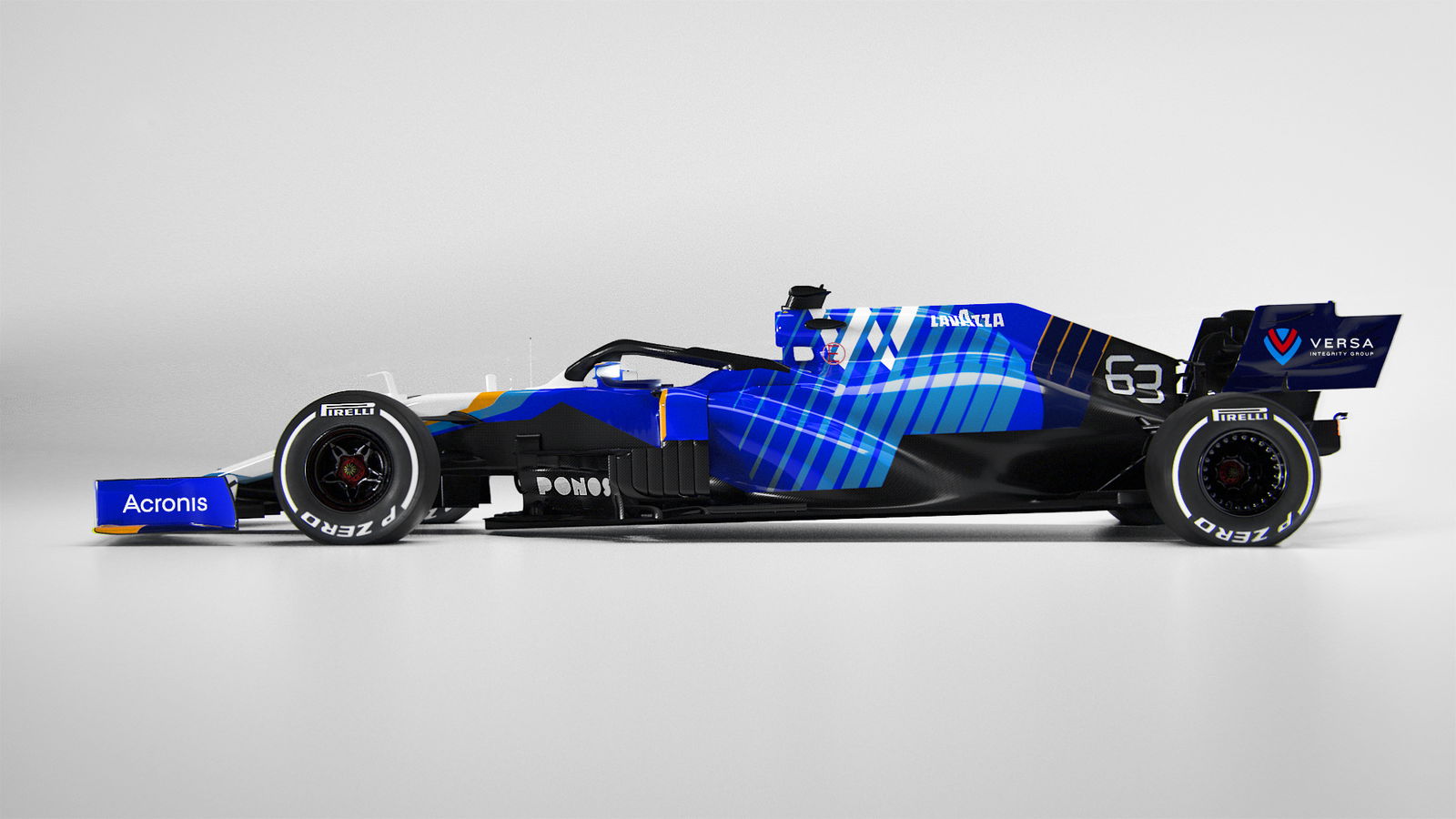Romain Grosjean’s Bahrain F1 crash registered 67G as findings revealed

Romain Grosjean’s fireball Formula 1 crash at the Bahrain Grand Prix occurred at 119mph and registered a peak impact of 67G, according to an FIA investigation into the accident.
F1’s governing body, the FIA published the findings of its investigation into Grosjean’s terrifying, fiery crash during last year’s Bahrain Grand Prix on Friday.
The report, which comprised interviews with all involved, inspection of the physical evidence, analysis of available video material, and data from the car’s accident data recorder and driver’s ear accelerometers, provided a detailed outcome into what happened and has helped the FIA determine how to make further safety improvements in the future.
The investigation was examined by the Serious Accident Study Group, which is chaired by FIA president Jean Todt.
How the accident unfolded
Grosjean made contact with Daniil Kvyat’s front left wheel as the pair diced for position on the opening lap of the race, causing the Frenchman’s Haas to veer off into the barriers at Turn 3 while travelling at 241 km/h (149.75mph).
His car then impacted the guardrail barrier behind the run-off area at 192 km/h (119mph) at an angle of 29 degrees. The force and angle at which Grosjean’s Haas pierced the barriers caused the middle rail to fail and resulted in his survival sell becoming lodged.
“The car suffered extensive damage during the impact including separation of the power train assembly from the survival cell. The fuel tank inspection hatch on the left-hand side of the chassis was dislodged and the engine fuel supply connection was torn from the fuel tank “safety bladder”; both providing primary paths for the escape of fuel from the tank,” the report noted.
“The driver safety equipment including helmet, HANS and safety harness as well as the survival cell, seat, headrest and Halo frontal cockpit protection performed according to their specifications in protecting the driver’s survival space and managing the forces applied to the driver during the impact.
“The high voltage Energy Recovery System (ERS) battery was significantly damaged, with some parts of the ERS battery assembly remaining with the powertrain and others remaining attached to the survival cell.”
The resulting fire and rescue

Moments after the impact with the barrier, Grosjean’s car soon became engulfed in flames, starting from the rear of the survival cell and progressing forwards towards him as it grew.
Grosjean’s left foot became stuck as he attempted to extricate himself from the car, but he was able to free himself from the wreckage after managing to remove his racing boot, as well as the dislodged headrest and steering wheel.
The report noted that the race was red-flagged within 5.5 seconds of the accident, with the FIA Medical Car arriving on the scene within 11 seconds of Grosjean’s impact, partly in thanks due to taking a shortcut to avoid Turn 1.
“The arrival of the Medical Car carrying the FIA F1 Medical Rescue Coordinator Dr Ian Roberts, FIA F1 Medical Car Driver Alan van der Merwe and a local doctor, provided immediate assistance with each performing a pre-determined role,” it continued.
“Ian Roberts went immediately to the scene of the incident and instructed a marshal to operate the dry powder extinguisher around the cockpit where he identified Romain Grosjean as trying to make his egress. Alan Van der Merwe retrieved a fire extinguisher from the rear of the FIA Medical Car whilst the local doctor prepared the trauma bag.”
Grosjean was finally able to escape his burning car after 27 seconds, emerging unscathed aside from burns to the back sides of both hands.
After spending three days in hospital, he was discharged on 2 December 2020.

22 areas for improvement
The FIA has identified a total of 22 areas where driver safety can be improved as a result of the investigation, including changes to the fuel hatch, footwell and headrest.
“Important learnings have been drawn from these investigations that will drive our continuous mission to improve safety in Formula 1 and global motor sport,” said Todt.
“The enduring commitment of the FIA, particularly the Safety Department, on reducing risks associated with motor sport enabled Romain Grosjean to maintain consciousness and survive an accident of this magnitude. Safety is and will remain FIA’s top priority.”
The full list of areas the FIA will look to address are as follows:
Vehicle
- Regulation of survival cell front geometry, plus additional load tests in that area
- Review of existing regulations regarding rear view mirrors
- Review of steering column mounting requirements
- Review of regulation and homologation requirements for headrest assembly
- Analysis of Power Unit mounting and mount failure modes
- Ongoing research project: Wheel Restraint Cables (tethers)
- Design review of safety fuel bladder installations in all FIA single seater categories
- Recommendations for safety fuel bladder installation best practice
- Update of the FIA Standard for safety fuel bladders
- Review of regulations for design of safety fuel bladder connections and inspection hatches
- Fuel homologation to include compatibility of bladder material and specific fuel
Circuit
- Increased functionality for Circuit Safety Analysis Software (CSAS) including quantitative impact probability classification
- Review of existing circuit barrier opening installations
- Review of guidelines/process for circuit homologation and licence renewal
Driver safety equipment
- Investigation into improvements to the gloves’ Heat Transfer Index (HTI)
- Ongoing research project: Visor opening/locking mechanisms; project scope extended to include requirements to ensure that visor opening systems are operational after being exposed to fire
- Ongoing research project: Extinguisher system for open cockpit cars; project scope extended to include investigation of improved activation mechanisms
Medical and Rescue
- Updates to Medical Intervention Vehicle equipment, including alternate extinguisher types
- Provide ASN guidance on post-fire decontamination
- Ongoing development of FIA firefighting training module for ASNs
- Ongoing development of FIA high voltage safety training module for ASNs
- Ongoing development of FIA Incident Command/Co-ordination training module for ASNs
Additionally, the FIA Safety Department is also planning further research projects such as:
- Investigation of options for proximity warning systems and electronic visibility aids
- Research into retrofit and upgrade options to improve impact performance of existing guardrail barriers
- Research into novel barrier systems, effective across a wider range of impact conditions
- Research to assess current fire extinguishing media, firefighting equipment and personal protective equipment and assess new technologies



